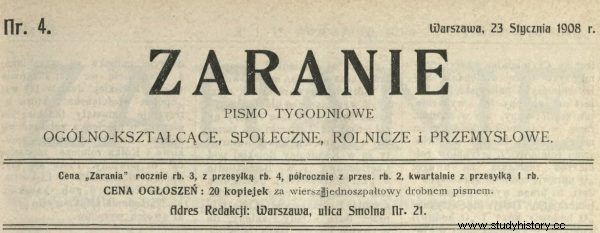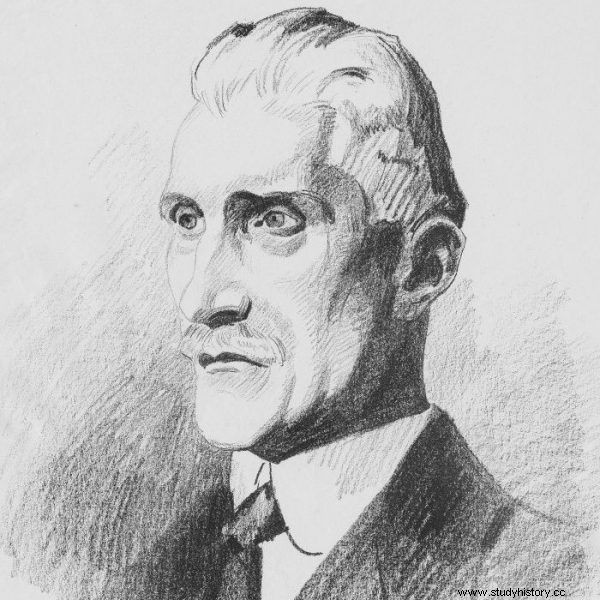She was the highest among all Polish women. After her, no other woman of this era held a position in the government. However, her career only lasted a few days. Who was Irena Kosmowska and what did she manage to achieve?
Irena Kosmowska was not afraid to be a heretic. A well-educated girl from an intellectual family, instead of in Warsaw salons, she shone in peasant huts. Immediately after graduating from Lviv in 1905-1908, she became a teacher at a village school for girls near Kutno. She was everywhere.
She organized courses for peasants, founded libraries, and was active in the Circle of Landowners and the Society of Agricultural Circles. And it constantly gave all power a headache.
Anticlerical radical
From 1908, she co-edited the extremely influential weekly for the people - "Zarania". Progressive, subversive writing was imprinted not only by tsarist officials, but also by the church hierarchy. The editors repeatedly stressed that the clergy were the great oppressors of the peasantry; that priests deliberately fool common people and rob them of their money. The bishop cast a curse not only on the editorial office, but also on the readers of the weekly, and the peasant movement centered around Zarania was hailed as a "religious heresy". It was a really popular heresy:reportedly, the magazine reached 50,000 people.

Zarania vignette from 1908
Kosmowska ran the cultural and educational department in Zarań, was the secretary of the editorial office, was responsible for contact with readers and two supplements to the magazine. Still, this was not enough to fulfill her ambitions. She published a brochure devoted to Wyspiański's "Wedding", for which the authorities sentenced her to a year of the fortress. She made a mockery of her time in prison, but she didn't slow down at all.
Co-creator of the seed of the future government
She was among the founders of the Temporary Committee of the Confederation of Independence Party - an agreement of political parties about a patriotic trait, which in the event of the outbreak of war was to emerge from the national government and which already in 1912 appointed Józef Piłsudski as the commander-in-chief of the Polish army.
Immediately after its creation, she joined the Women's League of the Military Ambulance Service, which was preparing the female base for the fight for independence in the territory of the Russian partition. And when the anticipation of the World War actually broke out, it found itself in the ranks of the clandestine Polish Military Organization.

Learn about the fate of women who won independence for Poland, and for themselves - freedom, voting rights and the dignity that have always been denied them. The latest book by Kamil Janicki, 'Niepokorne damy. Women who won an independent Poland ”now available for sale!
Transport to Moscow
Although the Russians still held tight, in 1914 she signaled a protest against the conciliatory policy of the Polish right towards the tsarist regime. As a result, she was arrested, imprisoned in Warsaw, and when the Germans approached the city - she was taken to Moscow. "It took ten days in a train under fire," she recalled. Then she spent five months in a cell on Taganka.
The merits, works and initiatives of Kosmowska can be multiplied. She was active in the Polish Society for Aid to War Victims, and as a member of the Red Cross mission in 1917 she traveled to Finland and Sweden. She was also among the founders of the new PSL political party "Liberation", created, inter alia, on the basis of the former "Zaryaniec" milieu. She also organized the first general assembly of this formation. The most honorable - at least officially - stage of her career came in November 1918.
New career card
When the self-proclaimed people's government of Ignacy Daszyński was established in Lublin in the wake of the partition of the partitioning party administration, she joined it as the deputy minister for social welfare and propaganda at the same time. In the latter, it was of course responsible for agitation among the peasants.

Ignacy Daszyński in a drawing by Stanisław Lentz from 1919
She was the only woman in the first government of the reborn Poland. It would also quickly turn out that she was the last one - during the entire interwar period no other Polish woman would take over the government portfolio in any cabinet.
Kosmowska's brilliant advancement did not last, as did the entire government of Daszyński. After a few days, the office was at the disposal of Józef Piłsudski. He also never managed to take power even in a small part of Polish territory. This does not mean, however, that his activities went unnoticed. It was the Daszyński government that first announced the granting of full electoral rights to Polish women (read more about it in my other article) . And today it is often said that Irena Kosmowska also had to contribute to this decision.
